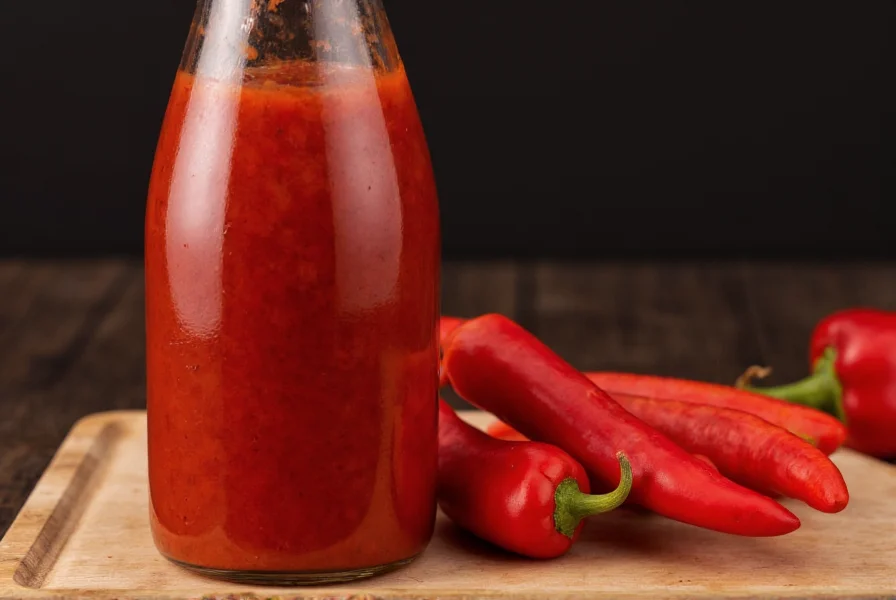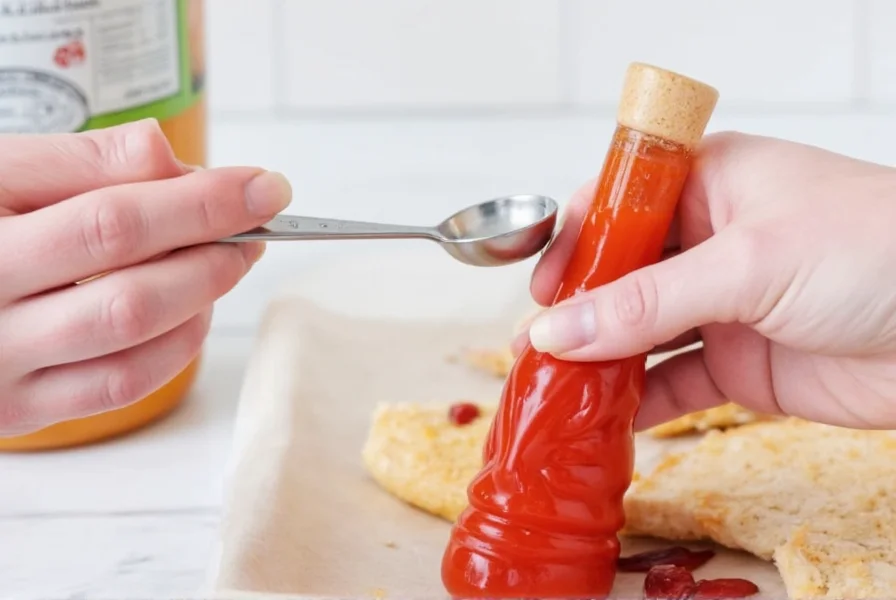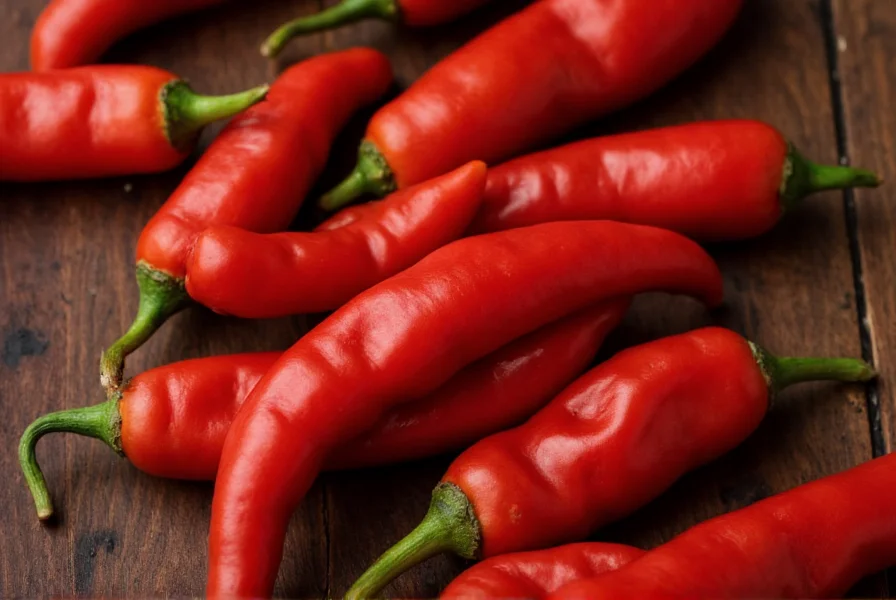Understanding the unique characteristics of red devil pepper sauce helps home cooks and hot sauce enthusiasts make informed decisions about incorporating this versatile condiment into their culinary repertoire. Unlike generic cayenne sauces, red devil pepper sauce features a specific pepper variety that delivers a distinctive balance of heat and flavor.
Core Characteristics of Red Devil Pepper Sauce
Red devil peppers represent a specific cultivar within the cayenne family, scientifically classified as Capsicum annuum 'Red Devil'. These peppers mature to a deep red color and contain capsaicin levels that place them firmly in the medium-to-high heat category. The resulting sauce typically registers between 30,000-50,000 Scoville Heat Units (SHU), making it noticeably hotter than standard Tabasco (2,500-5,000 SHU) but milder than habanero-based sauces (100,000-350,000 SHU).

The flavor profile distinguishes red devil pepper sauce from other hot sauces. While many commercial hot sauces rely heavily on vinegar for preservation and tang, authentic red devil pepper sauce balances the natural fruitiness of the ripe peppers with just enough acidity to preserve without masking the pepper's inherent sweetness. This creates a more complex flavor experience compared to single-note hot sauces.
Ingredient Breakdown and Production Process
Traditional red devil pepper sauce contains minimal ingredients to showcase the pepper's natural qualities:
| Primary Ingredient | Percentage | Function |
|---|---|---|
| Red devil peppers | 60-70% | Provides heat and primary flavor |
| Vinegar | 25-35% | Preservation and tangy counterbalance |
| Salt | 2-3% | Flavor enhancer and preservative |
| Optional: Garlic or spices | <5% | Flavor complexity |
Artisan producers typically ferment the peppers for 1-3 weeks before blending with vinegar and salt, which develops deeper flavor notes while maintaining the signature bright heat. Commercial versions often skip fermentation for faster production, resulting in a sharper, more one-dimensional taste profile that characterizes many red devil pepper sauce ingredients in mass-market products.
Comparing Heat Levels and Flavor Profiles
When evaluating how hot is red devil pepper sauce compared to alternatives, consider both Scoville ratings and flavor characteristics:
- Red devil vs standard cayenne: Red devil peppers represent a specific cayenne cultivar bred for consistent heat and flavor. While standard cayenne sauces can vary widely (30,000-75,000 SHU), red devil maintains a more predictable 30,000-50,000 SHU range.
- Red devil vs Tabasco: Tabasco sauce (made from tabasco peppers) ranges 2,500-5,000 SHU - significantly milder than red devil's 30,000-50,000 SHU.
- Red devil vs sriracha: Most sriracha brands measure 1,000-2,200 SHU, making red devil approximately 15-50 times hotter.
The flavor difference matters as much as the heat measurement. Many consumers searching for red devil pepper sauce vs cayenne want to understand why they'd choose one over the other. Red devil offers a cleaner, brighter heat with less smokiness than some cayenne varieties, making it more versatile for applications where you want heat without overpowering other flavors.
Optimal Culinary Applications
Understanding what to eat with red devil pepper sauce maximizes its culinary potential. Its medium-high heat level and bright flavor profile make it particularly effective in these applications:
- Breakfast dishes: A few drops elevates scrambled eggs, omelets, or breakfast sandwiches without overwhelming delicate flavors
- Marinades for proteins: The acidity helps tenderize while the heat penetrates meat - particularly effective with chicken, pork, and shrimp
- Cocktail enhancement: The classic addition to Bloody Marys provides heat without the vinegar-forward punch of standard hot sauces
- Soups and stews: Adds depth to tomato-based soups, chili, and bean dishes when added toward the end of cooking
Chefs recommend adding red devil pepper sauce late in the cooking process to preserve its bright flavor notes. High heat diminishes the nuanced fruitiness of the peppers, leaving only the capsaicin burn. For those exploring red devil pepper sauce recipe variations, consider mixing with honey or agave for a sweet-heat glaze, or blending with mayonnaise for a spicy dipping sauce.
Storage Guidelines and Shelf Life
Proper storage affects both safety and flavor preservation. Follow these red devil hot sauce storage tips to maximize quality:
- Store unopened bottles in a cool, dark pantry for up to 2 years
- Refrigerate after opening to maintain flavor integrity (most manufacturers recommend this)
- Use clean utensils when handling to prevent contamination
- Discard if mold appears or vinegar smell turns unpleasantly sharp
Homemade versions without preservatives require stricter handling. Refrigerate immediately and consume within 3-4 weeks. The vinegar content in commercial sauces acts as a natural preservative, but flavor degradation occurs over time even when properly stored.
Safety Considerations for High-Heat Sauces
While is red devil pepper sauce too hot for most people depends on individual tolerance, its 30,000-50,000 SHU rating places it within comfortable range for most hot sauce enthusiasts. For context, police-grade pepper spray starts around 2,000,000 SHU, making red devil sauce approximately 40-60 times milder than defensive sprays.

When handling any high-heat sauce, follow these safety practices:
- Wear gloves when working with concentrated sauces or fresh peppers
- Avoid touching face or eyes after handling
- Start with small amounts (⅛ teaspoon) and adjust to taste
- Keep dairy products nearby as capsaicin neutralizers (milk, yogurt, sour cream)
Individuals with sensitive digestive systems should exercise caution, as capsaicin can exacerbate conditions like acid reflux or irritable bowel syndrome. Those exploring red devil pepper sauce uses in cooking should begin with minimal quantities and increase gradually based on personal tolerance.
Frequently Asked Questions
What makes red devil pepper sauce different from regular cayenne sauce?
Red devil pepper sauce uses a specific cayenne cultivar bred for consistent heat (30,000-50,000 SHU) and bright flavor profile. Regular cayenne sauces can vary widely in heat (30,000-75,000 SHU) and often contain additional spices that alter the flavor profile. The red devil variety maintains a cleaner, more predictable heat with less smokiness than many generic cayenne sauces.
Can I substitute red devil pepper sauce for Tabasco in recipes?
Yes, but use approximately 1/6 to 1/10 the amount since red devil pepper sauce is 6-10 times hotter than Tabasco (which measures 2,500-5,000 SHU compared to red devil's 30,000-50,000 SHU). Start with a few drops and adjust to taste, as the flavor profile differs - red devil offers brighter pepper notes while Tabasco has more vinegar-forward tang.
How long does red devil pepper sauce last after opening?
Commercial red devil pepper sauce typically remains at peak quality for 6-12 months when refrigerated after opening. The high vinegar content acts as a preservative, but flavor degradation occurs over time. Discard if you notice mold, an off smell, or significant separation that doesn't recombine with shaking. Homemade versions without preservatives should be consumed within 3-4 weeks.
What foods pair best with red devil pepper sauce?
Red devil pepper sauce complements eggs, Bloody Mary cocktails, grilled chicken, shrimp, tomato-based soups, and bean dishes particularly well. Its medium-high heat level and bright flavor enhance without overwhelming - making it versatile for breakfast, lunch, and dinner applications. Avoid pairing with delicate fish or mild cheeses that might be overpowered by the sauce's intensity.
Is red devil pepper sauce fermented?
Artisan versions typically undergo 1-3 weeks of fermentation to develop complex flavor notes, while commercial mass-market products often skip fermentation for faster production. Fermentation creates a more nuanced flavor profile with subtle tanginess, whereas non-fermented versions deliver a sharper, more immediate heat. Check product labels for fermentation mentions if this characteristic matters to your culinary application.











 浙公网安备
33010002000092号
浙公网安备
33010002000092号 浙B2-20120091-4
浙B2-20120091-4